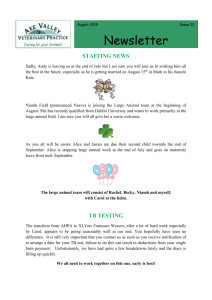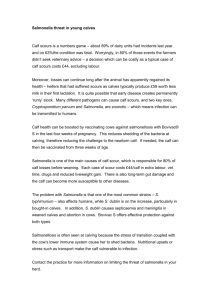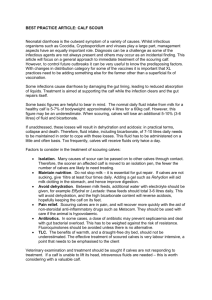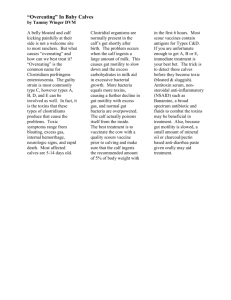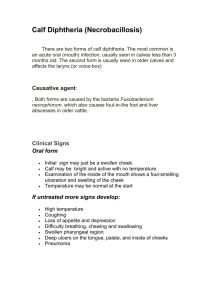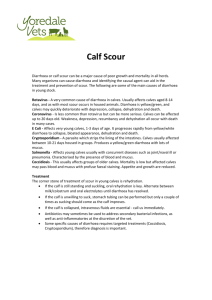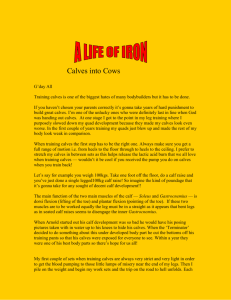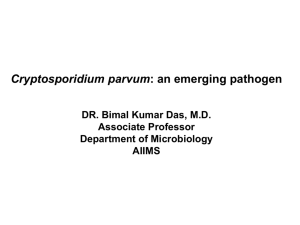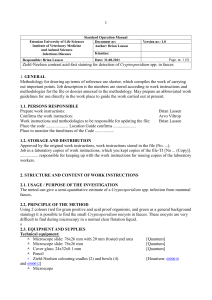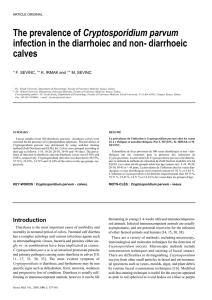Don`t assume anything when it comes to calf scour
advertisement
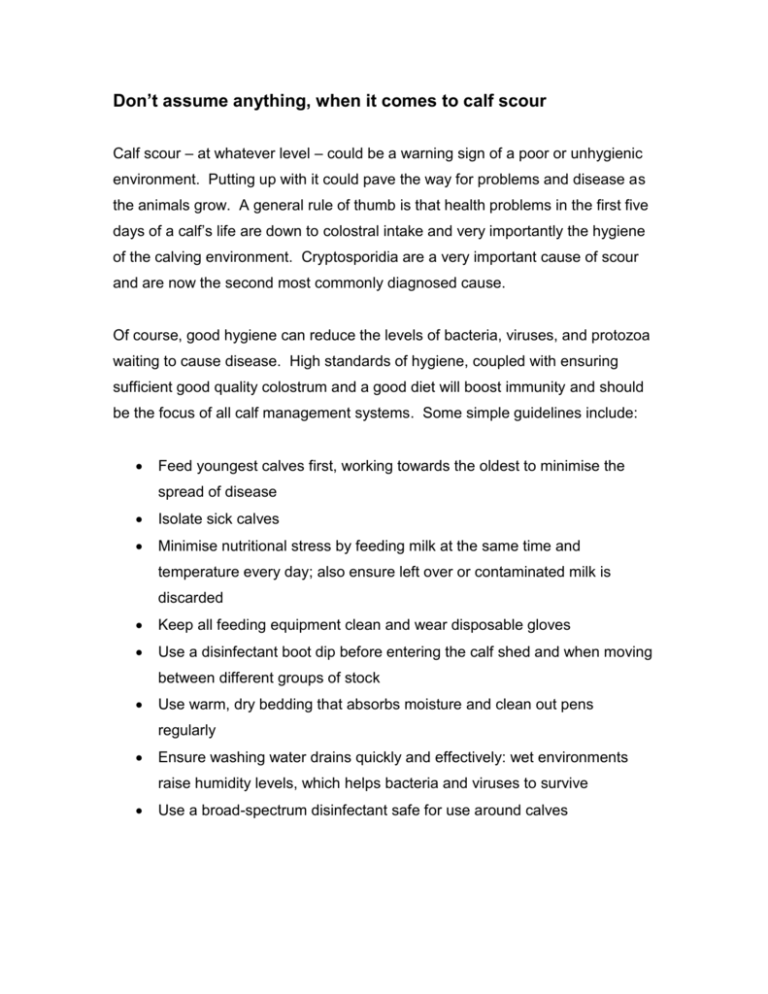
Don’t assume anything, when it comes to calf scour Calf scour – at whatever level – could be a warning sign of a poor or unhygienic environment. Putting up with it could pave the way for problems and disease as the animals grow. A general rule of thumb is that health problems in the first five days of a calf’s life are down to colostral intake and very importantly the hygiene of the calving environment. Cryptosporidia are a very important cause of scour and are now the second most commonly diagnosed cause. Of course, good hygiene can reduce the levels of bacteria, viruses, and protozoa waiting to cause disease. High standards of hygiene, coupled with ensuring sufficient good quality colostrum and a good diet will boost immunity and should be the focus of all calf management systems. Some simple guidelines include: Feed youngest calves first, working towards the oldest to minimise the spread of disease Isolate sick calves Minimise nutritional stress by feeding milk at the same time and temperature every day; also ensure left over or contaminated milk is discarded Keep all feeding equipment clean and wear disposable gloves Use a disinfectant boot dip before entering the calf shed and when moving between different groups of stock Use warm, dry bedding that absorbs moisture and clean out pens regularly Ensure washing water drains quickly and effectively: wet environments raise humidity levels, which helps bacteria and viruses to survive Use a broad-spectrum disinfectant safe for use around calves One of the more poorly understood causes of scours is Cryptosporidium parvum. The parasite that causes this disease thrives in damp bedding and in calf houses that are not cleaned regularly with appropriate disinfectants. Recent laboratory data shows that Cryptosporidium parvum is now nearly as common as rotavirus. Cryptosporiduim is most often a problem from five to 14 days of age. Signs of cryptosporidiosis include: Profuse watery diarrhoea over several days that is unresponsive to usual therapies; Depression, lethargy; Reduced appetite; Raised temperature and dehydration – sometimes fluid therapy may be necessary; Abdominal pain; Mortality – usually five to 10% but can be higher NB accurate diagnosis is only possible through the identification of oocysts from faecal samples. Unlike most other causes of calf scours, colostrum plays very little part in its control. In addition, the oocysts are very hard to destroy in the environment, requiring the use of ammonia-based products which can be unpleasant to use. Halocur® is the only product licensed for the treatment and prevention of Cryptosporidium infection in cattle and acts upon the early stages of the parasite’s life-cycle. In practical terms, Halocur reduces the replication of Cryptosporidium during the period of administration, which reduces the scale of the parasitic burden in the calf, and also the shedding of oocysts into the environment. This gives the calf the chance to develop its natural, age-related immunity to Cryptosporidium whilst reducing the level of challenge to the other calves. Therefore, Halocur not only reduces the severity of diarrhoea, it can also prevent infection spreading to other calves. Calves treated with Halocur (administered daily for seven days) have been shown to require less antibiotics, anti- inflammatories and especially rehydration therapy. In the same study, the untreated calves’ level of dehydration remained more pronounced despite the rehydration therapy and their general condition and appetite were similarly poorer. The practice is able to offer an immediate on-farm diagnosis for Cryptosporidium, contact us for further information.

